The 800-pound gorilla, otherwise known as Bethpage Black, returns to the forefront in golf when hosting this week’s 101st PGA Championship. The famed layout hosted two US Opens in ’02 and ’09 respectively, as well as two Northern Trust events on the PGA Tour and a forthcoming Ryder Cup is planned in ’24.
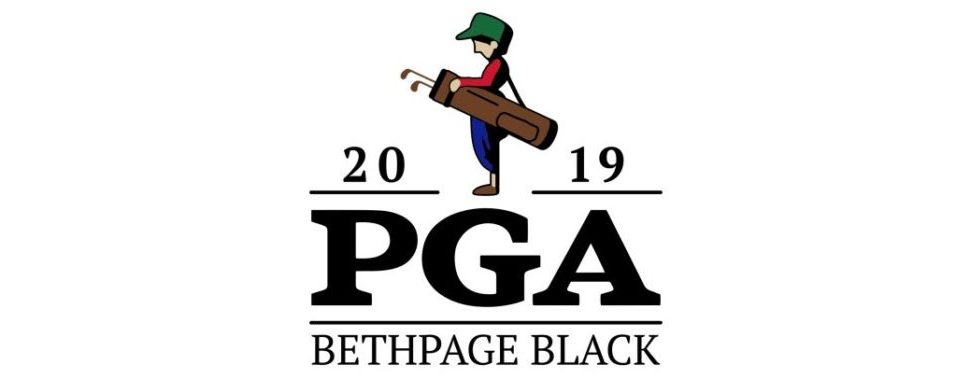
The return of major championship golf will once again showcase a tenacious layout that provides no quarter to those failing to execute properly. Those seeking to compete for the illustrious Wannamaker Trophy had best fare well on the respective holes illuminated in greater detail below.
4th hole / 517 Yards / Par-5
The first three holes at Bethpage Black do not really showcase what the terrain provides. When leaving the 3rd green the players will take a short walk to an elevated tee pad area and at that precise moment will gaze out onto the rolling fairway and simply stare in awe. The hole descends into the driving zone but a massive fairway bunker hugs the left side tightly. The 4th turns slightly to the left and the bunker protects the more advantageous left side. Those opting to fly the bunker at 290 yards had best hit a top tier drive to do so. There is more room to the right but that line of attack only increases the length of the hole. The fairway ends at roughly 330 yards from the tee.
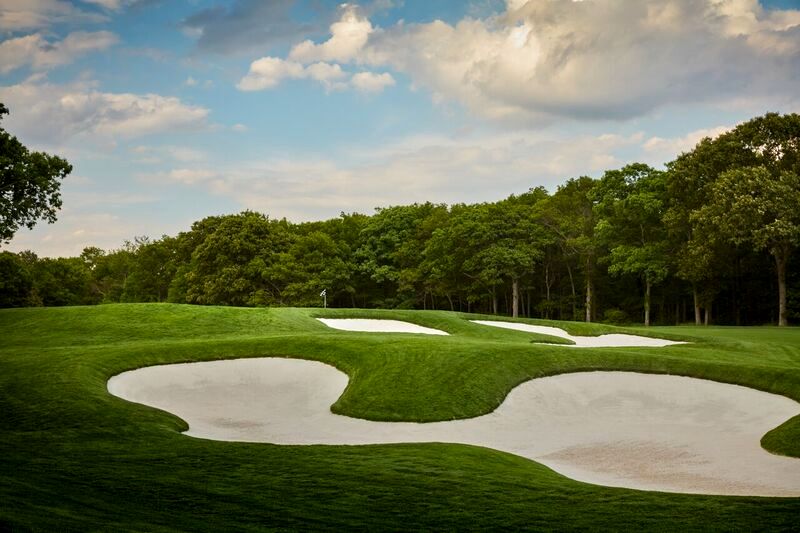
As large as the fairway bunker is on the left you then encounter an even larger sand pit resembling the Sahara running perpendicular and set into a large hillside which divides the lower and upper fairway areas. The key in avoiding the second bunker is to hit the fairway. Those getting a problematic lie in the rough will have to think long and hard in attempting to carry it because of the elevation encountered. There’s rough on the far side of the Sahara bunker so just getting over will not provide a quick and easy reprieve.
Those hitting a perfectly placed drive over the left fairway bunker will have to ponder on whether to go for the green in two shots. The putting surface is protected by a frontal bunker and tilts away from the player. The putting surface is also elevated considerably above the landing area for tee shots. Those unable to hit a very high and soft approach can easily hit and jump off the green. Going over the green will likely mean a range of perilous situations. With expected softer turf conditions because of recent rains — the green may be receptive for a wider variety of shot trajectories.
The wise choice for 2nd shots is to hit away from the green to the far right side. This eliminates the frontal bunker as an obstacle and leaves a fairly straightforward chip to any pin placement. Those following this game plan will likely add a birdie opportunity to the scorecard. The 4th at Bethpage Black is one of the world’s great par-5 holes without water in the equation.
5th Hole / 478 Yards / Par-4
When completing the 4th the players then head to the formidable par-4 at the 5th. Over the years the teeing area was extended from 445 to 478 yards. Generally, the prevailing wind assists from the south/southwest during the main playing season. Should the wind pattern reverse itself from the north/northwest then the demands encountered will only intensify.
The rear teeing area is elevated above the fairway. In the far distance sits the green — elevated noticeably above the fairway.
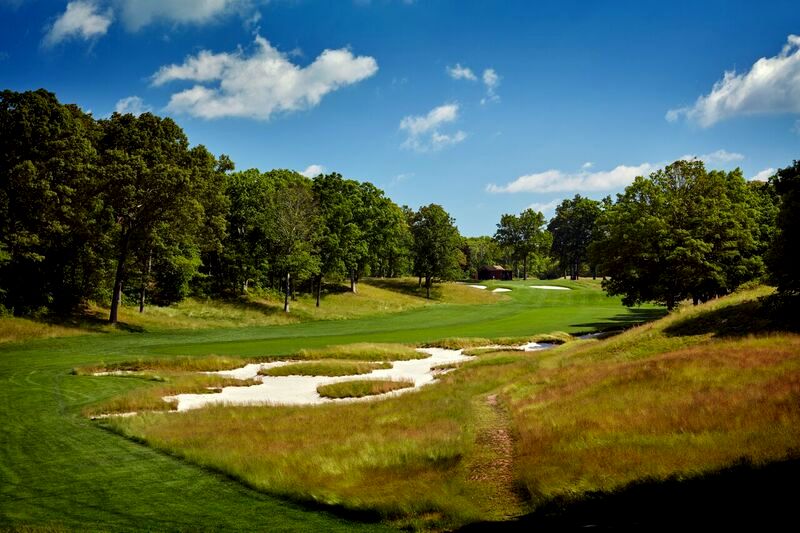
Players will need to account for a massive fairway bunker that runs in a diagonal line of play. Those successful in carrying the maximum amount down the right side — approximately 290 yards — will be left with a far shorter approach and secure the optimum angle into the green.
Players favoring a shorter line of play from the tee in order to avoid the aforementioned fairway bunker will encounter a far longer and more likely totally blind approach — especially when the pin is cut to the left side of the green.
The 5th green is quite large but as with so many holes at the Black the elevated green will require a careful choice of club for the approach. The green itself also presents an array of subtle movements. The 5th is another classic example in which superior driving skills set in motion realistic possibilities to make birdies.
15th Hole / 484 Yards / Par-4
Although there are no official names for the holes at the Black — the 15th can be rightly named “Mount Olympus.” The hole turns slightly left in the drive zone with the final 180 yards moving uphill. The green is literally perched on a high precipice — 50-feet above the fairway with two distinct tiers on the putting surface — the green sloping diagonally from rear left to front right. Although modified to 478 yards after architect Rees Jones worked on the course for the ’02 US Open, the max length played by the USGA in both Opens was set at 459 yards. For the PGA this week the teeing area will be extended to a stout 484 yards.
Generally the prevailing seasonal wind is behind the players but if that should change then players will have to deal with a headwind which can significantly to the challenge.
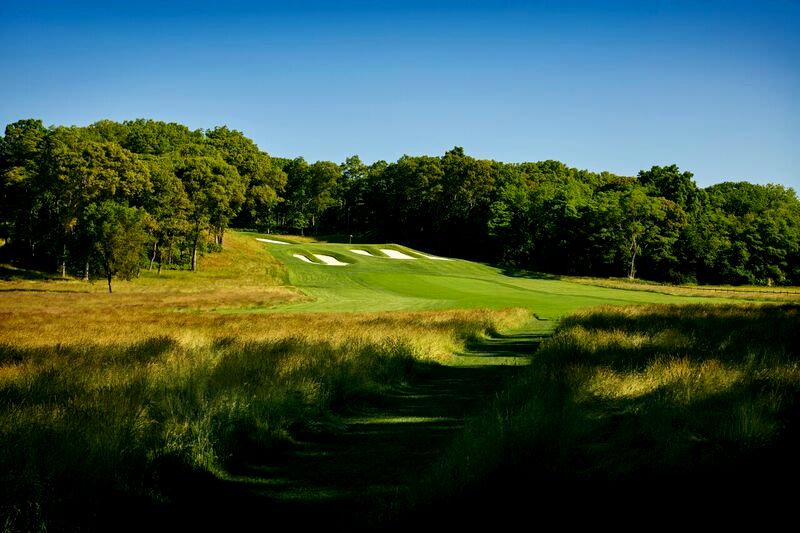
The most crucial element starts with the tee shot. Failure to find the fairway means no real opportunity to reach the green in the regulation stroke for most players. For those hitting the green the key is being near enough to the pin so massive breaking putts can be avoided. Should one miss the green — either short, left or worse long — the penalties can be exacting. The long time adage — that you can’t win the event on the 15th but most certainly can lose it clearly applies here.
Starting with the ’02 US Open, the fairway cut on the left side was extended further out — therefore putting players on notice to respect the penalty for missing on that side. How tough was the hole for the ’02 US Open? The stroke average was just over 4.6! In short, the need for exemplary execution is central to one’s success. Count on the 15th hole playing a pivotal role in the championship.
17th Hole / 207 Yards / Par-3
The penultimate hole is a clear test of nerve and could very well decide what golfer emerges victorious in 2019’s second major. The green is protected fiercely by frontal bunkers. What many don’t realize from viewing on television is that the far left side is slightly more elevated than the teeing area. This mandates that shots be clubbed correctly to avoid potentially plugging into the face. When the pin is cut to the far left side it also takes a bit of stopping power on one’s approach to avoid going over.
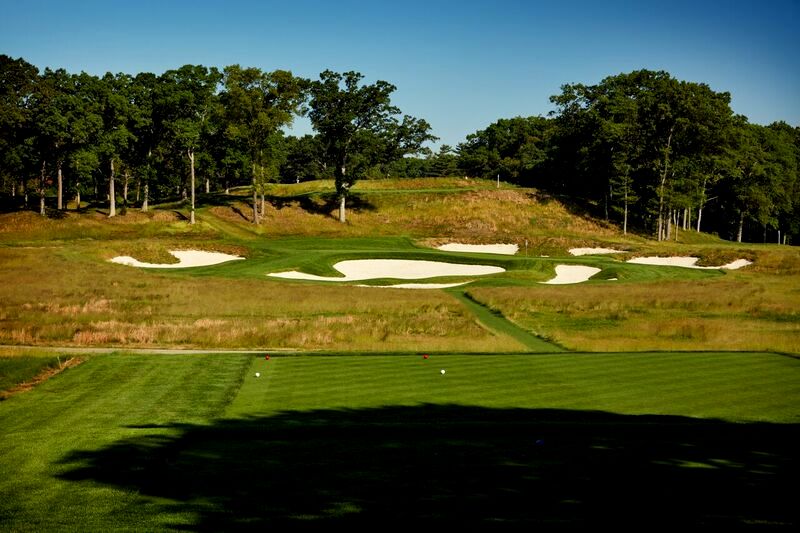
A right side hole location will require less club but the precision needed for success is no less testing as bunkers — both frontal and in the rear — shrink the effective landing area.
The green is 43 yards wide and there are two distinct halves. The wind pattern can also be a vexing matter. The prevailing can often mean a crosswind coming into the players from the left. If the wind should swift to the north/northwest then a similar crosswind can happen but this time into the players from the right.
Club selection in conjunction with a player’s appetite for risk will clearly be front and center on the 17th.